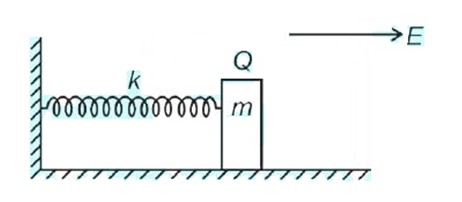Ask & Answer: India's Largest Education Community
All Questions
New Question
a month agoContributor-Level 10
There are two types of electricity - Static and Current electricity. The electric charges buildup on a material's surface is called the static electricity. The continuous flow of electric charge is termed as the current electricity. Current electricity is of two types - Alternating Current (AC) and Direct Current (DC). In AC, the charge direction reverses periodically and in DC, charge flows in one direction.
New Question
a month agoContributor-Level 10
The current's SI unit is ampere. The symbol for ampere is A. The term ampere is named after the French physicist André-Marie Ampère.
New Question
a month agoContributor-Level 9
According to Einstein’s photoelectric equation maximum kinetic energy of photoelectrons,
or
When then,
or
or
New Question
a month agoContributor-Level 10
Mixture of acetone and chloroform shows negative deviation from Raoult’s law because of hydrogen bonding
New Question
a month agoContributor-Level 10
In simple words, current electricity can be defined as the electric charge continuously moving from one place to another along a pathway. It is measured in amperes (A). Electric current is needed for electrical devices to work.
New Question
a month agoContributor-Level 10
No, in fact, it is one of the easiest chapter of class 12 Physics. Other chapters which are considered comparatively easy are Ray Optics and Electric Charges and Fields.
New Question
a month agoContributor-Level 10
Resistance of whole wire is
Let length of the shorter section = a
New Question
a month agoContributor-Level 10
These two are varied terms, similar in their functioning but differ in their output. Inductance stores energy in the magnetic field to oppose the flow of electric current. And capacitance stores energy in the electric field in order to oppose the flow of voltage through the device. Capacitance is measured through the SI unit Farad (F).
New Question
a month agoContributor-Level 10
Ellingham diagram explains the feasibility of reduction process not the kinetics of process.
Register to get relevant
Questions & Discussions on your feed
Ask & Answer
Panel of Experts

